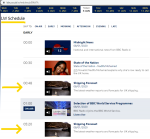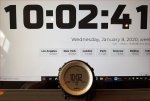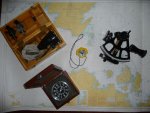Kukri
Well-Known Member
Basically Latitude has never been the problem .... the problem was Longitude and one of the main reasons the Chronometer was designed and put to use.
I'm intrigued by your statement ... because the age old professional Navigator would take a series of morning sun sights and then run them up based on speed / course on the plotting chart to ships noon. At local noon he would then obtain suns highest altitude - giving him Latitude. Simple course and speed correction to ships noon and draw the line intersecting with run-up morning sights ... giving the ships position at ships noon. Marc St Helaire of course. (I used Long by Chron as a cadet just to prove I could do it - but soon preferred MsH).
Because the ship had reports to make to owners / charterers via the Master - the noon position had to be available as near to noon as possible and not based on run back afternoon work.
Not trying to be smart - just commenting based on Commercial Shipping nav work.
I don’t think we are disagreeing at all. I was just pointing out the easiest route for a yachtsman beginner to gain confidence in using a sextant. I agree with your description of ship procedure.



